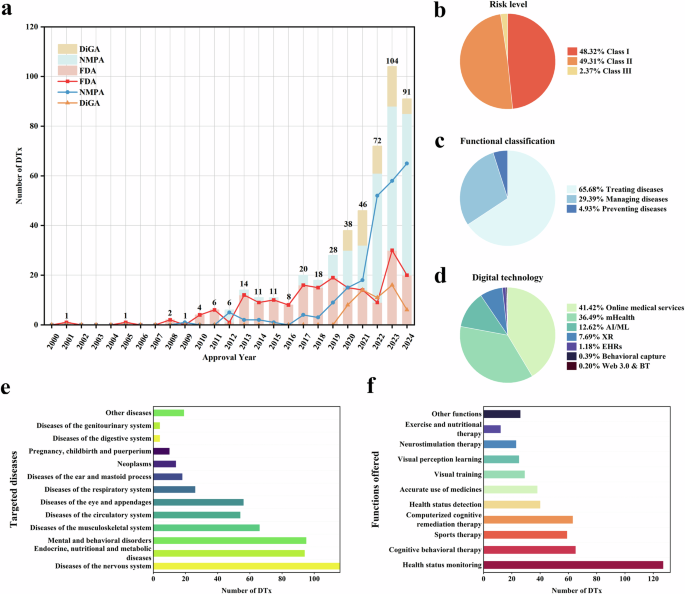Quality factors affecting the continued use of mobile health apps in ethnic minority regions of Southwest China using PLS-SEM and ANN

This study aimed to identify and examine the factors influencing the CI of m-health app users in the ethnic minority regions of Southwest China using a mixed-methods approach. The testing of the proposed model confirmed that CON, INQ, PU, SAT, and SYQ are significant predictors of the CI for m-health Apps among users in these regions. Furthermore, the ANN analysis revealed that SAT is the most critical predictive factor for the CI of m-health Apps, followed by INQ, PU, SYQ, and CON. These findings will be discussed in greater detail below.
This study confirmed that SAT with m-health Apps is a significant predictive factor for the CI among users in the ethnic minority regions of Southwest China. This suggests that users in these regions with higher SAT levels are likely to continue using m-health apps. Among the direct influencing factors of CI, SAT had the strongest impact. This finding aligns with Chiu, Cho14, who explored the factors affecting the CI of fitness and health app users based on the ECM and Investment Model. Their results indicated that users’ SAT with fitness and health apps is a key predictor of CI. In this study, on the one hand, within the m-health domain, when users are satisfied with m-health Apps, they are likely to form stable usage habits. This implies that they may frequently revisit the app for health consultations, doctor appointments, etc., fostering a long-term motivation for use. On the other hand, users with higher SAT are more likely to recommend the app to others. This is particularly significant in closely-knit ethnic communities. User recommendations can enhance the credibility and appeal of the app, thereby promoting its continued use by more users.
The PU of m-health Apps significantly influences the CI among users in the ethnic minority regions of Southwest China. The empirical examination in this study found that PU is the second strongest factor directly predicting CI. This indicates that if users in these regions perceive m-health Apps as providing effective guidance and information, their intention to continue using these apps increases. This finding is corroborated by Wang, Fan36, who explored the factors influencing the CI of m-health Apps and how gamification-induced user perceptions affect CI. Their results demonstrated that users’ PU of m-health Apps is an effective predictor of CI. In the context of Southwest China’s ethnic minority regions, traditional medical resources may be insufficient or inaccessible due to geographical and cultural factors. If m-health Apps provide easily accessible services such as medical consultation, disease prevention information, and medication purchasing, they can effectively meet these users’ needs. Users who perceive this usefulness are more likely to rely on these apps long-term to meet their health needs.
The CON of users in the ethnic minority regions of Southwest China regarding m-health Apps significantly affects their SAT. This means that the higher the level of CON of expectations after using m-health Apps, the more satisfied the users are. Among the direct influencing factors of SAT, CON emerged as the strongest predictive factor. According to current results, previous studies have already demonstrated that outpatient CON of e-health services in India effectively predicts SAT33. In this study, on the one hand, m-health Apps provide accurate health information, high-quality consultation services, and user-friendly interfaces. These features often meet or exceed user expectations, typically leading to higher SAT with the app. On the other hand, m-health Apps contribute to health education and disease management tools, enhancing users’ awareness and self-management capabilities regarding health issues. Once users acknowledge these benefits, their SAT correspondingly increases.
The PU of m-health Apps significantly affects the SAT of users in the ethnic minority regions of Southwest China. This implies that if users in these areas believe that m-health Apps can improve their health status or knowledge, their SAT will increase. In the direct predictors of SAT, PU is the second strongest factor. This study supports previous evidence observed35. Leung and Chen35 examined the role of Hong Kong users’ technology readiness and ECM in improving life, showing that PU significantly impacts SAT among Hong Kong users. In this study, on the one hand, traditional medical resources may not be easily accessible in remote ethnic minority areas of Southwest China. M-health Apps provide a convenient avenue to access medical services and information, and this convenience and accessibility enhances user SAT. On the other hand, the tools and resources offered by m-health Apps help users manage their health conditions more effectively. For instance, through tracking health indicators, providing customized health advice, or convenient online consultations, users’ SAT with m-health Apps is increased.
The CON of m-health Apps significantly influences the PU for users in the ethnic minority regions of Southwest China. This means the more positively users in these regions confirm their experiences with m-health Apps, the stronger their PU becomes. This result aligns with the findings of Cheng34, who, based on the ECM and Flow Theory, examined the impact of human, organizational, and technological factors on the CI of Taiwanese medical personnel towards a cloud e-learning system. The results indicated that Taiwanese medical personnel’s CON of the cloud e-learning system effectively predicts PU. In this study, on the one hand, m-health Apps may have been well adapted to the cultural characteristics of the Southwest ethnic minority regions, such as offering interfaces in local languages and aligning with local users’ habits and preferences, making the app more easily accepted and perceived as useful. On the other hand, in areas where resources are relatively scarce, m-health Apps provide convenient access to medical information and services, addressing the shortage of physical medical resources and thereby being perceived as useful by users.
The INQ of m-health Apps in the ethnic minority regions of Southwest China significantly impacts users’ PU. This indicates that the more effective and scientifically sound the information provided by the m-health Apps, the more useful these apps are perceived by users in these regions. This finding is supported by Cheng, Chen52, who, based on the ISSM and the TAM, examined the behavioral intentions of smartphone users. Their results showed that the INQ provided by mobile phones is one of the key predictors of users’ PU. In this study, high-quality information typically implies that the content is accurate and reliable. In the medical field, accuracy is crucial as it directly relates to users’ health and treatment decisions. When users access accurate medical information in an app, they are more likely to perceive it as useful, as it provides trustworthy guidance and recommendations.
The INQ of m-health Apps significantly influences user CON in the ethnic minority regions of Southwest China. This means that the higher the INQ of the m-health Apps, the more positive the CON is for users in these regions. This study supports the results previously observed54. Their research, which collected self-reported data from 305 Taiwanese doctors exploring the factors influencing their CI to use cloud hospital information systems, found that the INQ of these systems significantly impacts doctors’ CON. In this study, given the potential educational and linguistic differences among users in the ethnic minority regions of Southwest China, the information’s clarity and ease of understanding becomes particularly important. Information should be presented clearly and straightforwardly, ensuring that users with different educational backgrounds and language habits can easily comprehend it. This helps increase users’ understanding and acceptance of the information, influencing their overall app evaluation.
The SYQ of m-health Apps significantly affects user CON in the ethnic minority regions of Southwest China. This suggests that if m-health Apps are well-designed and user-friendly, the users in these regions will have a higher level of CON. This finding aligns with the results of Cheng56, who, based on the Cognitive Absorption Theory and the ISSM, explored the factors influencing the CI of 378 Taiwanese medical personnel using cloud e-learning systems. The results indicated that the SYQ of cloud e-learning systems significantly impacts medical personnel’s CON. In this study, users in the ethnic minority regions of Southwest China may have diverse technological backgrounds and usage habits. An intuitive, easy-to-navigate interface can help users utilize the app more effectively, especially those less familiar with digital technology, enhancing their CON of the app. Additionally, in areas where network connectivity may be unstable, like ethnic minority regions, the application must be optimized to ensure stable performance in poor network conditions. Frequent crashes or prolonged loading times can lead to a poor user experience, affecting users’ CON and trust in the app.
The SEQ of m-health Apps does not significantly impact the PU for users in the ethnic minority regions of Southwest China. This implies that, in the context of m-health app usage, users in these regions do not believe that the assistance and support of service personnel significantly enhance the app’s helpfulness for their health. This finding contrasts with the discoveries of Trang and Tuan53, who, based on the TAM and ISSM, examined the SAT with information SYQ among 363 users of hospital management information systems in Vietnam. Their results showed that the SEQ of management information systems significantly impacts users’ PU. The observed discrepancy between SEQ and PU can be explained as follows: On the one hand, the user group in the ethnic minority regions of Southwest China (primarily the general public) may have different needs and expectations compared to the user group of hospital management information systems in Vietnam (hospital administrators). Professional users might be more inclined to link SEQ with PU, whereas general users might focus more on other factors like ease of use or accessibility. On the other hand, there could be significant cultural, economic, and societal differences between the ethnic minority regions of Southwest China and Vietnam. These differences could influence users’ expectations and perceptions of SEQ, as well as how they evaluate the usefulness of an app. Users in different regions may react and perceive the same level of SEQ differently.
The SYQ of m-health Apps in the ethnic minority regions of Southwest China does not significantly impact users’ PU. This suggests that although m-health Apps are well-structured and easy to navigate, they may not necessarily enhance users’ health management or decision-making abilities. However, this result does not align with previous research51. Based on the ISSM, Widiastuti, Haryono51 investigated the factors influencing SAT and net benefits of the information system among 93 lecturers at Malang State University, finding that the quality of the information system is a significant predictor of users’ PU. There are two possible explanations for this discrepancy. Firstly, the characteristics of users in the ethnic minority regions of Southwest China, such as cultural background, health needs, and technological proficiency, may differ from the target groups of previous studies. Different user groups may have varying perceptions and experiences regarding the importance of SYQ. Secondly, specific socio-economic conditions, health resource distribution, and network infrastructure in the ethnic minority regions may influence users’ expectations and experiences with m-health Apps, thereby affecting their perception of SYQ.
The SEQ of m-health Apps in the ethnic minority regions of Southwest China does not significantly impact user CON. This indicates that even though m-health Apps can provide informational support and professional knowledge, this does not necessarily elevate the level of user CON. This finding contradicts previous research, which indicated that the SEQ of cloud e-learning systems significantly positively affects the CON of Taiwanese medical personnel56. Several reasons could explain this discrepancy. Firstly, the user groups of these two types of systems might have different characteristics and needs. For instance, users of e-learning systems might focus more on the system’s instructional effectiveness and content quality. In contrast, users of m-health Apps might be more concerned with the accuracy and timeliness of information. Secondly, m-health Apps and cloud e-learning systems serve different purposes and functions. E-learning systems typically focus on providing educational content and learning experiences, whereas medical apps emphasize providing health information and medical consultations. These two types of applications might differ in terms of user expectations and how SEQ affects them.
Implications
Theoretical implications
The first theoretical implication of this study is the impact of quality factors on CI’s use of m-health Apps. The study further confirms the significant influence of quality factors (INQ, SEQ, and SYQ) on the CI of m-health Apps. By thoroughly analyzing the specific mechanisms of these quality factors, the research enriches the application of SEQ theory in mobile healthcare. It provides a new theoretical perspective for understanding users’ expectations of mobile healthcare services. This contribution is significant for the design of user-centered m-health Apps, aiding in enhancing user SAT and loyalty.
Secondly, another theoretical implication of this study is its specific focus on the Southwest ethnic minority regions of China. The findings related to these regions reveal the unique impact of regional culture and socio-economic background on the CI’s use of m-health Apps. This discovery adds a new dimension of regional culture to the SEQ theory and provides valuable theoretical guidance for understanding and promoting healthcare informatization in remote areas. The research underscores the importance of considering regional characteristics in designing and promoting m-health Apps, offering strategies to bridge the gap in health information access across different regions.
Thirdly, this study’s innovative combination of SEM and ANN methods makes a significant contribution in terms of accuracy and depth in analyzing the relationship between quality factors and the CI to use m-health Apps. This methodological innovation enhances the credibility and explanatory power of the research and provides new tools and pathways for future studies in complex data analysis and pattern recognition. This has a lasting impact on elevating the methodological standards of social science research, marking the third theoretical implication of this study.
Finally, compared to prior literature53,54,56, this study reports contradictory findings, such as the non-significant impact of m-health Apps on user CON, the non-significant influence of SEQ on PU, and the non-significant effect of SYQ on PU. These discrepancies call for more exhaustive research, necessitating the inclusion of larger and more representative samples to better understand and resolve these contradictions. This highlights the need for continuous and expansive exploration in the field, especially in the context of varying regional and cultural settings.
6.1.2 Practical implications.
Firstly, SAT and PU of m-health Apps are significant predictive factors for users’ CI. This study underscores the central role of SAT users in the CI in using medical apps, especially within the specific socio-cultural context of the ethnic minority regions of Southwest China. As a key predictive factor, SAT highlights the importance of focusing on user experience for medical app developers and policymakers in the design and improvement of apps. This necessitates providing high-quality services to ensure user SAT, thereby fostering long-term usage of the app.
Secondly, while the study found that the impact of SYQ on users’ PU is insignificant, its significant influence on user CON indicates that the usability and stability of the system design have an undeniable effect on user experience. This emphasizes the need to focus on technical performance and user interface design in developing medical apps, ensuring they meet the needs of various user groups, especially in Southwest ethnic minority regions where technological infrastructure might be less developed. This consideration is crucial for ensuring the apps are accessible and user-friendly, catering to the specific contexts of these regions.
Thirdly, the importance of INQ and PU as predictive factors highlights that medical apps must provide accurate, reliable, and useful information to meet users’ needs. This aspect is particularly crucial for the ethnic minority regions of Southwest China, where there may be a lack of traditional medical resources. Thus, the high-quality information provided by medical apps can satisfy users’ immediate needs and foster their long-term reliance on these digital health tools. Providing trustworthy and relevant health information becomes a key strategy for ensuring these apps’ effectiveness and sustained use in regions where alternative medical resources are limited.
Finally, user CON of medical apps – the match between their expectations and actual usage experience – is crucial for enhancing user SAT and PU. This suggests that developers of medical apps need to understand and manage users’ expectations, ensuring that the app’s features and services meet or exceed these expectations. It highlights the importance of aligning the app’s offerings with users’ needs and preferences and continually adapting to evolving user expectations, especially in dynamic healthcare contexts. This approach can help build a loyal user base and enhance the overall effectiveness of the app.
Limitation and future work
In this study, there are some limitations despite considering various factors like SYQ, INQ, and SEQ in the CI of m-health app users in the Southwest region. Firstly, the study primarily relied on questionnaire surveys for data collection, which may limit a deeper understanding of participants’ actual CI for using m-health Apps. Survey reliance on self-reporting is subject to the subjectivity of respondents. Future research could consider more objective data collection methods, such as in-depth interviews and case studies, to acquire richer and more authentic data. Secondly, this study’s choice of explanatory variables was somewhat limited, focusing on quality factors. However, the determinants of users’ CI for m-health Apps might be multifaceted, and other variables such as subjective norms, social support, and familial environment could also significantly impact the CI. Future research should consider additional potential influencing factors and use more comprehensive models to explore and predict the CI of m-health Apps. Including these variables can provide a more holistic theoretical framework and support the development of more targeted intervention strategies. Lastly, the study was primarily based on cross-sectional research, which does not reveal the long-term changes in CI for m-health Apps over time. Future studies should conduct longitudinal research to better understand the evolution of these behaviors over time and their long-term impacts. This approach would provide valuable insights into user engagement and retention dynamics with m-health Apps.
link






